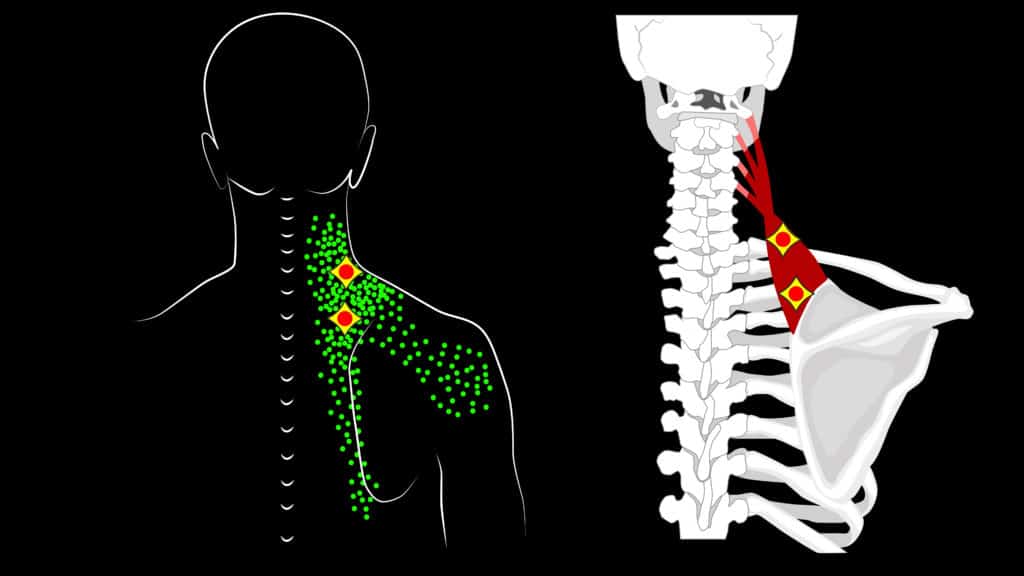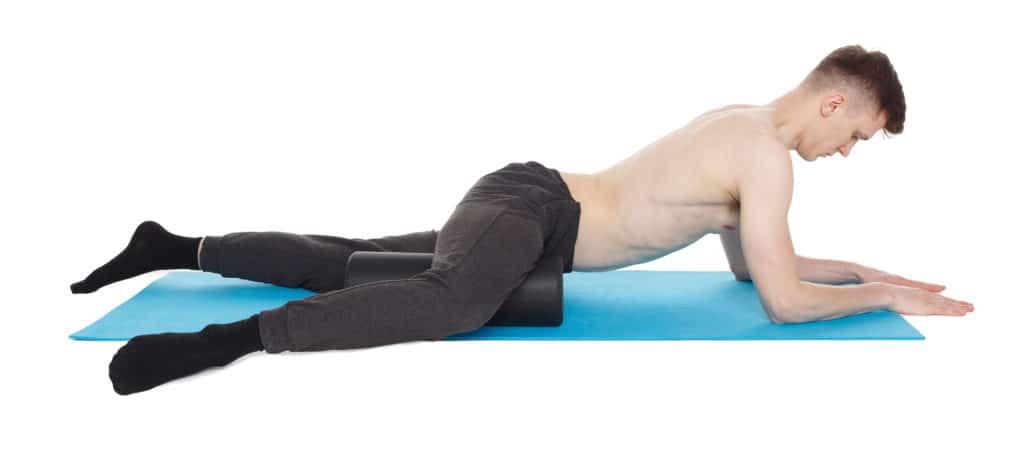Heard of trigger points? For some, a trigger point is when your child asks, “why?” or “can I have a snack?” for the one-millionth time today.
For others, it’s when your husband leaves his socks on the floor or doesn’t hang his jacket up in the proper place. When your girlfriend is hormonal and moody but snaps, “I’m fine.” Your boss emailing or calling out of hours. Your mother-in-law nit-picking – or being downright rude. Or when flaky friends predictably cancel dinner plans right at the last minute.
None of these situations are serious, of course. But after a while, there comes a “trigger point”. After you’ve dutifully picked up your husband’s coat and socks, night after night, and put them where they should go. Or you’re left deflated, again – by unreliable friends – after a blowout and hiring a babysitter when even the most patient among us tend to get a little irritated.
You might even say that this is the point where you become “hyper-irritated” (more on that later).
The tipping point (trigger) is different for everyone, depending on the level of stress in our daily lives, our strength, resilience, and patience. Our past traumas and interpersonal relationships. Personality type.
Your pressure gauge builds at a pace based on your individual, internal and external environment, past and present. But whenever that apple cart does tip, the outcome is usually the same – a volcano-like explosion or expression of emotion that resembles pulling the ring pull on a beer that has been shaken. Which, ironically, is a bit like the pattern that leads to the formation of trigger points inside the human body.
But What Are Trigger Points Inside The Body?

Many people believe that trigger points or trigger spots are the moveable “knots” you feel when giving or receiving a massage. They feel a bit like they “click” when you push them – and seem like you can move them right out of the muscle.
These superficial knots are innocuous accumulations of fluid and a natural part of a functioning human body. They’re unlikely to be the source of your chronic pain, and they’re different from the trigger points we work on in Myofascial Release Therapy. Myofascial trigger points are “hyper-irritated” and stiff, sensitive spots of connective tissue.
Unlike the superficial knots you feel during a relaxing Swedish massage or spa treatment, trigger points have the power to cause referred pain. So, even though you might feel pain in your traps (trapezius muscle), the source of your pain is more than likely your neck or your spine.
Weird science, isn’t it? The human body is a complex and clever thing.
The physical, malleable myofascial restrictions or trigger points are caused by shortened, stiffened, and dehydrated tissue. They’re like a roadblock stopping blood, oxygen, and lymphatic fluid from flowing freely through the adjacent muscles, arteries, and veins. But even with just one of these restrictions somewhere in your body, it can cause your entire system to be “off.”
Your body works tirelessly to maintain homeostatic balance. With blocks in the road, it must work even harder, and it isn’t invincible. We’re human, after all.
Visualize what happens when you put your foot on a hose pipe or how a river dam works. Everything backs up and pools behind the restriction. The stones in the dam, foot on the hose, or in this case, a trigger point in your fascia.
Nothing gets past it.
This obstacle is the trigger point – then it’s a cascade of dominos.
Untreated, the build-up of blood and lymphatic fluid and a lack of oxygen, movement, and mobility eventually cause a hot mess of inflammation, which compounds the situation and worsens pain. Stress, anxiety, and depression increase as a result, and you’re stuck on a merry-go-round of misery.
Chronic pain independently causes you to avoid exercise due to increased pain. But aside from that issue, over time, these trigger points cause so much stress on the body and restriction in the connective tissue that it results in a reduction in strength, muscle weakness, and mobility loss.
You’re more susceptible to injury, and sports, exercise, and day-to-day tasks that you once found easy become a struggle. Your body also starts performing compensatory movements and adjustments too. These altered movement patterns minimize pain, but they result in exacerbating imbalances. It’s a vicious circle.
Painkillers only mask the pain and come with many unpleasant side effects and long-term health consequences. Nobody wants to stay on this forever.
But the point we keep coming back to is that trigger points are fascinating. They’re a meaningful warning sign that something is wrong and requires your attention. But they’re not the whole picture.
The Truth About Trigger Points

Massage therapists, Instagram gurus, and functional fitness enthusiasts view trigger points in isolation. Believing they can press or roll over isolated spots and magically heal the pain.
This idea is incorrect, and if rolling is done incorrectly or too aggressively, it can make things worse. Instead of loosening, the bands of myofascial tissue get tighter and thicker – resulting in even more pain and restriction and decreased mobility. The exact opposite of “release.”
At Release Works, we’re detectives. We think of trigger points as the forensic evidence that sets the scene to discover who murdered Mr. Boddy in the board game, Clue (or the suspect in a real-life homicide), like a fingerprint on a door or DNA from a single strand of hair.
They’re the clue, though, not the murder weapon, and they don’t explain the motive. We need to dig much deeper to find the answers to those questions.
Your trigger point likely feels sore when we press it, but it’s not the real problem – that is usually much more well-hidden. Like looking for the Tudor Mansion murderer in Clue, finding the root cause of chronic pain is a highly skilled game of elimination – trigger points light the way.
But trigger points are just the tip of an enormous iceberg – or more precisely, long iceberg, often as long as your entire life. Potentially, going right back to illnesses and injuries or episodes of inflammation that occurred in your first few years of life.
These types of events in early childhood and adolescence are then compounded by life – your body compensating for injury: bone, muscle or tissue damage, scar tissue, chronic stress and tension, inactivity, and age-related degeneration – until the volcano (your body’s warning system) erupts into a painful, trigger point.
We understand, however, that it isn’t the trigger point we need to address. It’s the underlying emotional issues, dysfunctional movement patterns, and connective tissue restrictions we need to release.
How To Treat Trigger Points

This innovative therapy is entirely non-invasive and works in tandem with the body’s innate healing system. It involves, firstly, identifying the trigger points as well as the areas that are being beaten up and the troubled movement patterns causing it all, as we work backward to reveal the root cause of your pain.
Then, we apply gentle but firm pressure to signal to the body that the original threat has gone, regardless of whether “your tiger” was an illness, injury, inflammation, or trauma. They’re all threats to your body.
We then support it to rehydrate and relax the myofascial restrictions and return the stressed-out tissue to a more normal state.
If you’ve been in pain for a long time, it will take some time working together to resolve your pain. But after just one session, lots of our patients report feeling a deep state of relaxation, as well as marked improvements in their pain levels. Most find the sessions relaxing, even with only a tiny amount of pressure/pain in the sore spots.
It’s a good pain if that makes sense – instead of the chronic, exhausting pain, you’re used to. The sessions help you move well, feel well, and enjoy life. So, if you feel like you’ve run out of options to treat your chronic pain, Myofascial Release Therapy can help.
We spot and treat all the issues that are more likely to slip under the radar with traditional physical therapists and western medicine doctors. Suppose you have a diagnosis of Fibromyalgia, Chronic Fatigue Syndrome, or Myofascial Pain Syndrome, for instance. We help you find why it is presenting in your body and work with you to resolve the symptoms.
It’s much easier to treat these issues in the early stages of their progression instead of waiting for them to morph into something much more painful and harder to uncoil. So, don’t put off booking treatment.
Don’t stay stuck in pain any longer. The fastest, most effective way to treat and resolve chronic pain is to find the root cause. Are you ready to get started?
But don’t worry. If you’re still unsure, chat with us on a Free call about the pain you’re experiencing and determine whether Myofascial Release Therapy is right for your situation. This call is free for all new patients, and you’ll also get our tips and advice on how to address your pain for good instead of relying on temporary pain relief.
Alternatively, choose a 30-minute, face-to-face Discovery Visit at our Salt Lake City clinic instead. Book your appointment now.
We’re ready to help you get out of pain.
To read more about Myofascial Release Therapy and whom we help at the Release Works Myofascial Release Therapy clinic in Salt Lake City. Download our free report here.

